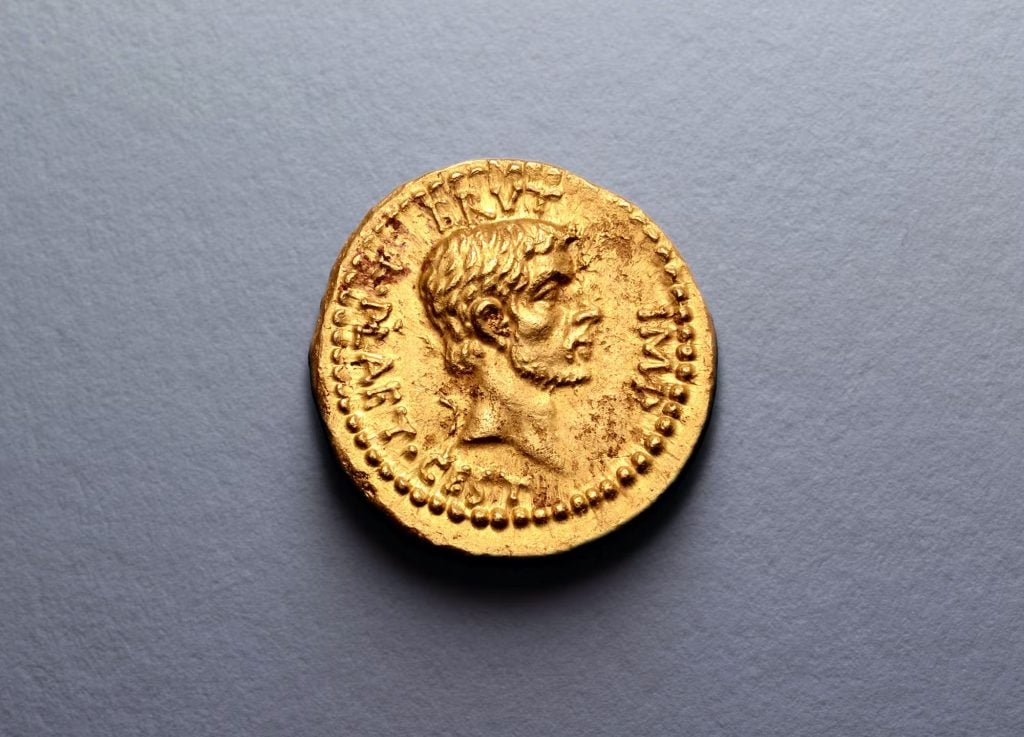Crime
A London Auctioneer Has Pleaded Guilty to Forging Provenance Documentation to Sell Ancient Coins Worth Millions
Richard Beale, owner of Roma Numismatics, now faces up to 25 years in prison.

Richard Beale, owner of Roma Numismatics, now faces up to 25 years in prison.

Artnet News

The owner of a London auction house has admitted to falsifying provenance documentation to sell a series of ultra-rare coins.
Appearing last month before a Supreme Criminal Court in New York, where he is being investigated, the auctioneer, Richard Beale, pleaded guilty to two counts of conspiracy and three counts of criminal possession of stolen property. The charges were related to multiple high-profile sales organized by Beale’s company, Roma Numismatics, in recent years.
The most notable instance occurred in 2020, when Roman sold an ancient “Eid Mar” (“Ides of March”) coin for nearly $4.2 million—a then-record price for a classical coin at auction. The token was minted in 42 BCE to commemorate the assassination of Julius Caesar and is just one of three known examples cast in gold. Also featured in the sale was a 2,400-year-old Sicily Naxos coin, which fetched $291,682.
A probe later conducted by the U.S. Homeland Security Investigations (HSI) agency found that both coins had been offered with forged provenance documents. (The two objects have since been repatriated to Greece and Italy, their countries of origin.) Beale was arrested earlier this year.
Court documents show that Beale and veteran coin expert Italo Vecchi, then a consultant for Roma, acquired the Eid Mar coin in 2015 for €450,000 ($484,000) in cash, despite it having no paperwork to certify its history. The duo attempted to sell it at the New York International Numismatics Convention that same year but were unsuccessful.
In 2020, Beale sent the coin to be authenticated in the U.S. He listed Turkey as the object’s country of origin, likely to avoid customs checks. An HSI informant said that, around this time, Beale offered to pay them €100,000 to sign forged provenance documentation. The informant declined.
Later that year, when the coin was put up for auction at Roma, it was said to have come “from the collection of the Baron Dominique de Chambrier, original attestation of provenance included.” An unidentified American collector purchased it for $4.2 million, blowing past the lot’s pre-sale estimate of £500,000 ($650,445).
In court last month, Beale also admitted to forging the provenance information for a selection of silver Alexander the Great decadrachms from the 4th century BCE, which had mysteriously disappeared after being discovered by fishermen in the Palestinian territory of Gaza six years ago, according to the BBC.
At Beale’s plea arraignment, Judge Althea Drysdale called his actions “woefully wrong and illegal” and “harmful to both the buyers and the nations whose cultural property [was] illegally acquired.”
Beale now faces up to 25 years in prison. His next court date is scheduled for March 2024.
Vecchi has pleaded not guilty to the charges against him, per the Antiques Trade Gazette.